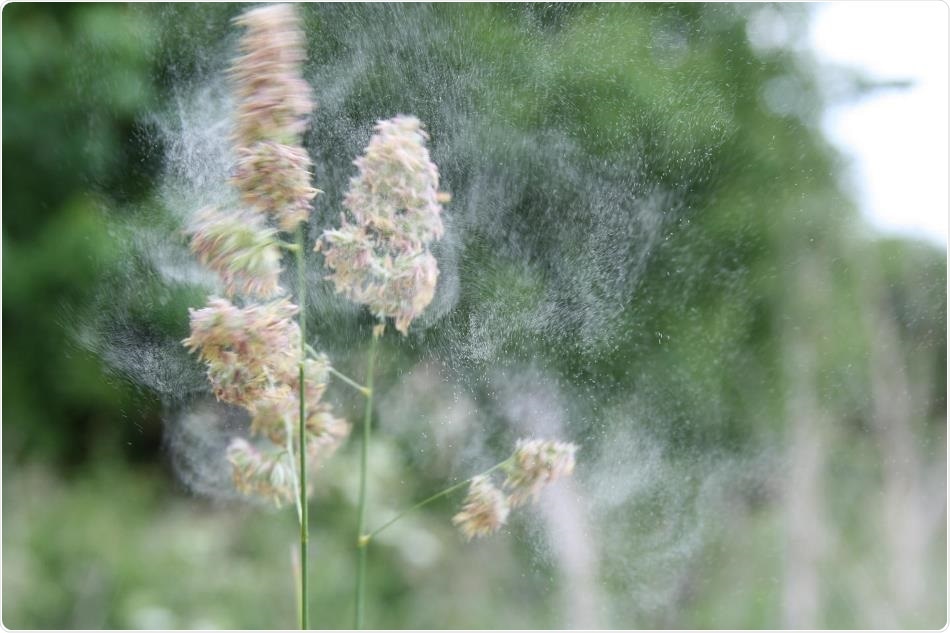Pollen from grass is a significant outdoor allergen that causes widespread and expensive respiratory conditions, such as hay fever (rhinitis) and allergic asthma.

This is a photo of grass pollen. Image Credit: Carsten A. Skjøth.
A team of researchers has reported in the Current Biology journal on March 11th, 2021, that environmental DNA could offer better insights on which grasses cause the worst impacts.
These findings represent a first step towards changing and improving our understanding of the complex relationships between pollen and population health. If confirmed and refined, this research could help to improve pollen forecasts and warnings in the future, supporting individual and community-level prevention strategies and management of healthcare system responses.”
Benedict Wheeler, University of Exeter
Wheeler and his collaborators Francis Rowney from the University of Exeter, Georgina Brennan and Simon Creer from Bangor University, and Nicholas Osborne from The University of Queensland, Australia, report that more than 400 million people across the globe suffer from allergic rhinitis, commonly referred to as hay fever.
Another 300 million suffer from asthma. Although it is well known that pollen grass is a common allergen, it is not yet evident which of the more than 11,000 grass species are responsible for the most distress for human health.
Previous investigations of airborne grass pollen have been constrained by the way in which concentrations of grass pollen in the atmosphere are typically monitored: using optical microscopy to identify and count pollen grains collected from aerial samplers.”
Francis Rowney, University of Exeter
“Since grass pollen grains from different taxa are generally not distinguishable using optical microscopy, most epidemiology has focused on population exposure to total grass pollen concentrations and how they associate with allergy-related health outcomes,” added Rowney.
As part of the new study, the team resorted to a different strategy, which involved the use of quantitative PCR (qPCR) and environmental DNA (eDNA) sampling to quantify the relative abundance of airborne pollen from common grass species across two seasons. Then, the researchers searched for patterns between the occurrence of specific types of grass pollen and the incidence of acute asthma exacerbations, and prescribing rates for allergy medicines.
The data indicated considerable variability in the comparative abundances of airborne pollen from various grass species, both throughout the United Kingdom and across the grass pollen season.
The analyses also suggest that pollen from specific grasses might have a disproportionate impact on relevant health outcomes at the population level, as shown by the number of prescriptions made for allergy medications and hospital admissions for asthma.
We’ve known for a long time that grass pollen has important implications for health at population scales, but, we didn’t really know very much about different types of grass pollen. This research suggests that there may be important differences in the public health impacts of pollen from different grasses.”
Georgina Brennan, Bangor University
“It suggests we should work to find out more and to consider whether the way we manage pollen health risks—such as warnings in the weather forecast—can be improved,” added Brennan.
The researchers note that plan to perform broader spatial coverage and monitoring across a higher number of pollen seasons to collect even more data related to the relative effects of individual grass species.
Ultimately, they added, “they envisage the development of a global network of autonomous aerial samplers, able to discriminate and quantify airborne pollen, allowing sensitive biomonitoring of important aeroallergens at high spatial and temporal resolutions.”
Source:
Journal reference:
Rowney, F. M., et al. (2020) Environmental DNA reveals links between abundance and composition of airborne grass pollen and respiratory health. Current Biology. doi.org/10.1016/j.cub.2021.02.019.